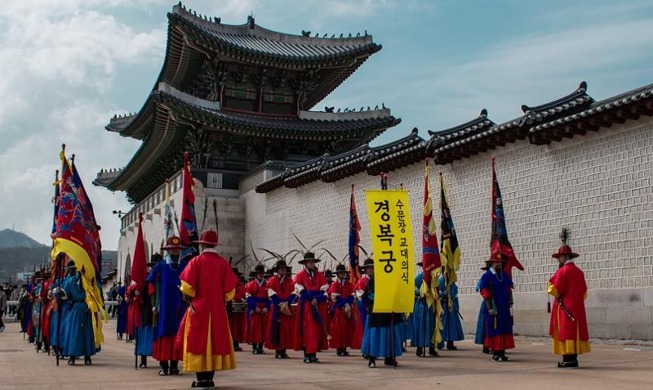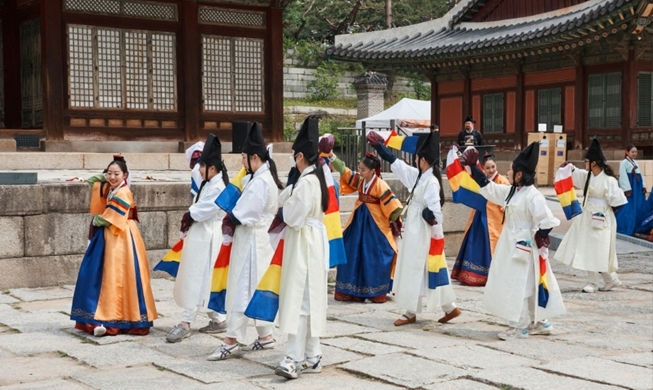-
 Korea.net's 24-hour YouTube channel
Korea.net's 24-hour YouTube channel- NEWS FOCUS
- ABOUT KOREA
- EVENTS
- RESOURCES
- GOVERNMENT
- ABOUT US
- 한국어
- English
- 日本語
- 中文
- العربية
- Español
- Français
- Deutsch
- Pусский
- Tiếng Việt
- Indonesian
|
Snack section of Monthly KOREA’s April 2020 issue. ▶ Link to Webzine |
Cup bap
As the most crucial staple of Hansik, rice is often mixed with a variety of dishes. Given the constant evolution of Korean food in both traditional and fusion forms, one of the more popular fast-food versions is cup bap (rice). Unlike the more widespread variations of rice-based meals on the go, cup bap is often shaped by the area it is made in. In Seoul’s Noryangjin region, a strip is officially named after the food: Cup Rice Alley.
Written by Kim Jane / Photographed by Studio Kenn
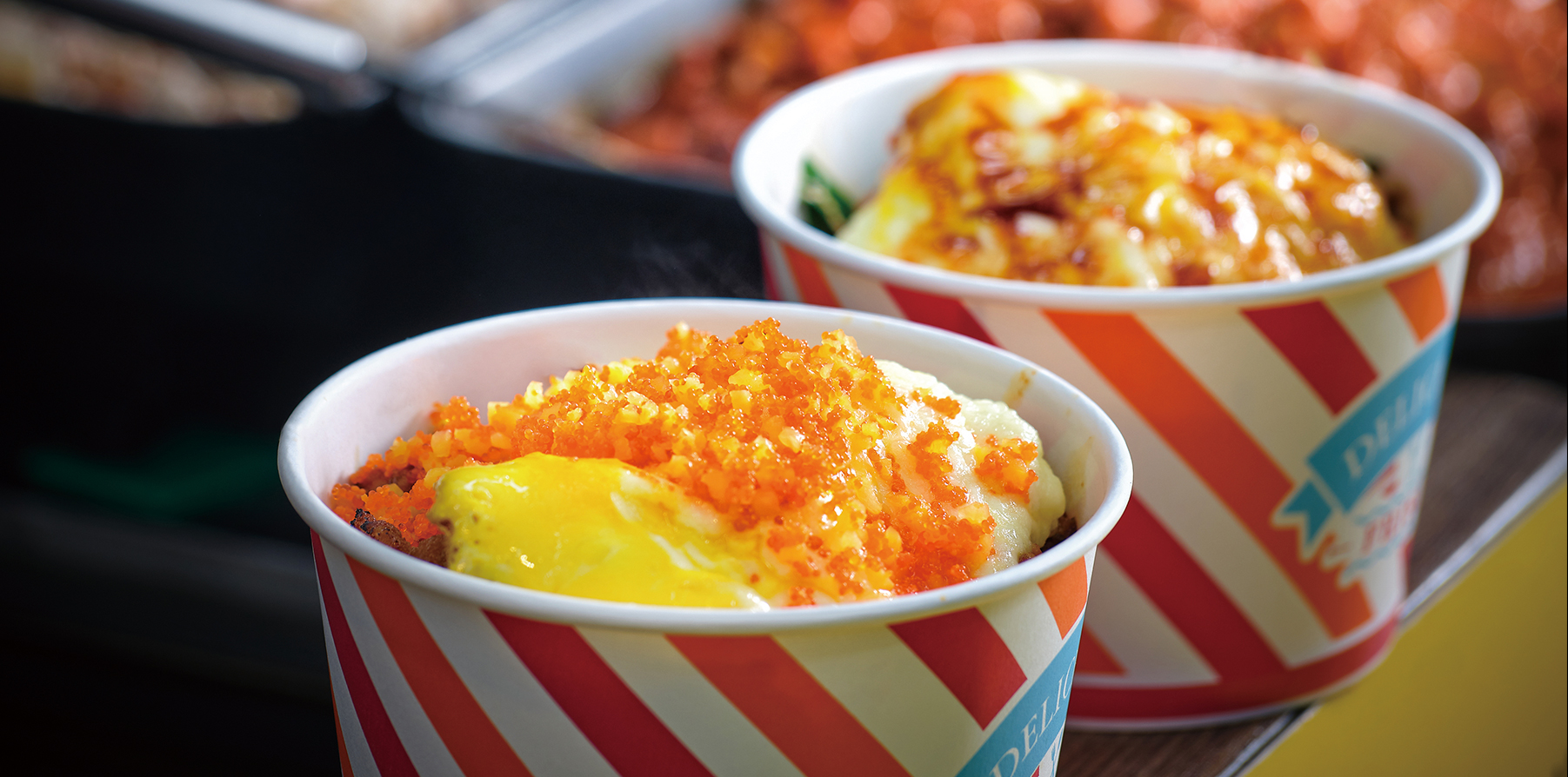
Given the high emphasis on education in Korea, the Noryangjin neighborhood in the late 1970s grew packed with hagwon, or academic tutoring institutes. The authoritarian regime at the time forbade such institutes from setting up shop in certain areas of the capital. Prominent institutes in Jongno-gu District consequently relocated to areas like Noryangjin. From 2010, the neighborhood teemed with students prepping for the college entrance exam, with many having failed the year before and giving the all-important test a re-do. Today, goshi hagwon (geared toward those preparing to take civil service exams) and gongshi hagwon (for those wishing to be government workers) dot the landscape in Noryangjin. Though the age group of exam preppers has shifted, Noryangjin retains its status as the home of the nation’s test takers.
Makeshift stalls offer a hearty and quick meal fix for those unable to afford a leisurely moment due to their academic obligations. Whether unable to afford the market price of the neighborhood’s real estate or catering to the economic level of cup bap consumers, the vendors of the fast-food are not the type to own brick-and-mortar storefronts.
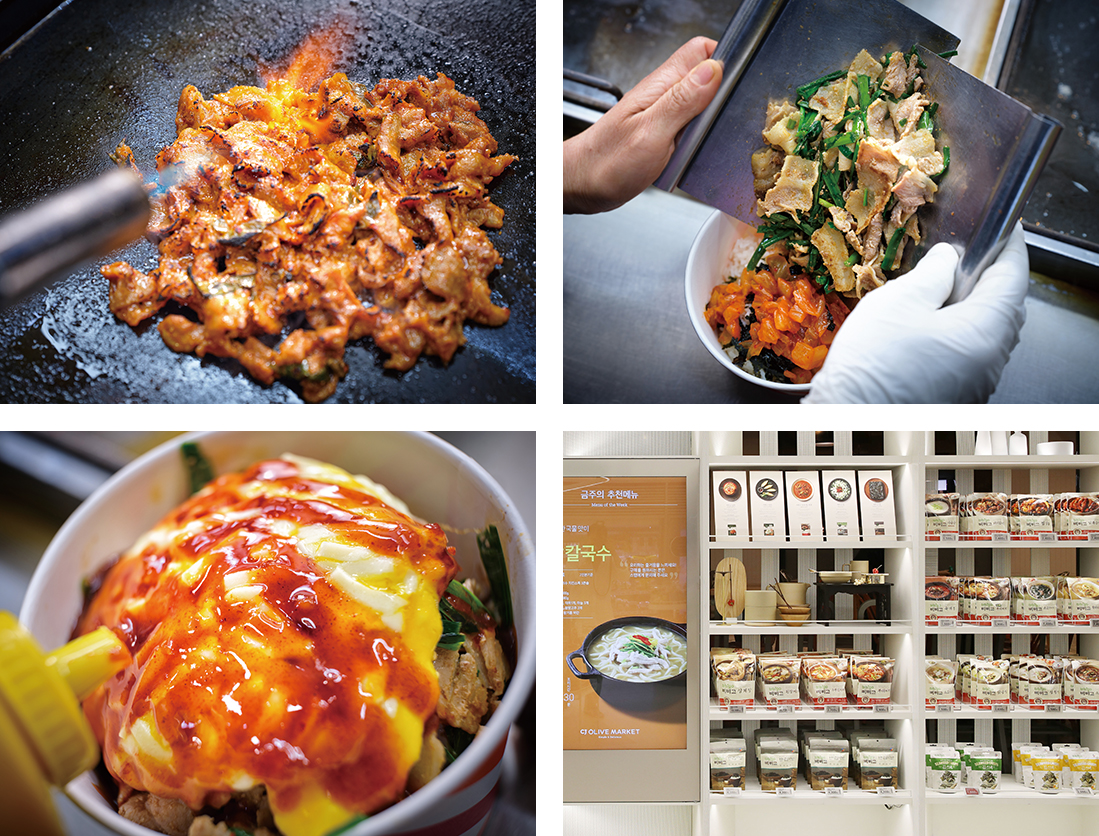
Going as cheap as KRW 3,500 per serving, cup bap is tastefully spiced up. / For a hearty meal, pick your own toppings to supplement the rice. / A variety of toppings are available ranging from spicy seasonings to mustard and cheese. / Grocery aisles and convenience stores are stocked with pre-packaged cup bap variants. © Yonhap News
From Conflict to Symbiosis
Going as cheap as KRW 3,500 per serving, cup bap is tastefully spiced up. / For a hearty meal, pick your own toppings to supplement the rice. / A variety of toppings are available ranging from spicy seasonings to mustard and cheese. / Grocery aisles and convenience stores are stocked with pre-packaged cup bap variants. © Yonhap News
Street vendors are typically outlawed in Korea, though enforcement is spotty. Noryangjin’s cup-bap vendors, however, have commanded a quantity and presence too prominent to overlook administratively. To resolve the chronic conflict between city authorities and unregistered vendors, Dongjak-gu District (which has jurisdiction over Noryangjin) sought to reorganize, legitimize and support these vendors.
In 2015, vendors on Cup Rice Alley were legalized to continue sales so long as they did not belong to a corporation and verification that their dependence on this business was their livelihood. The vendors also agreed not to produce items overlapping with those of others.
In the late 2010s, urban policymakers named the alley a benchmark in proper administrative solutions.
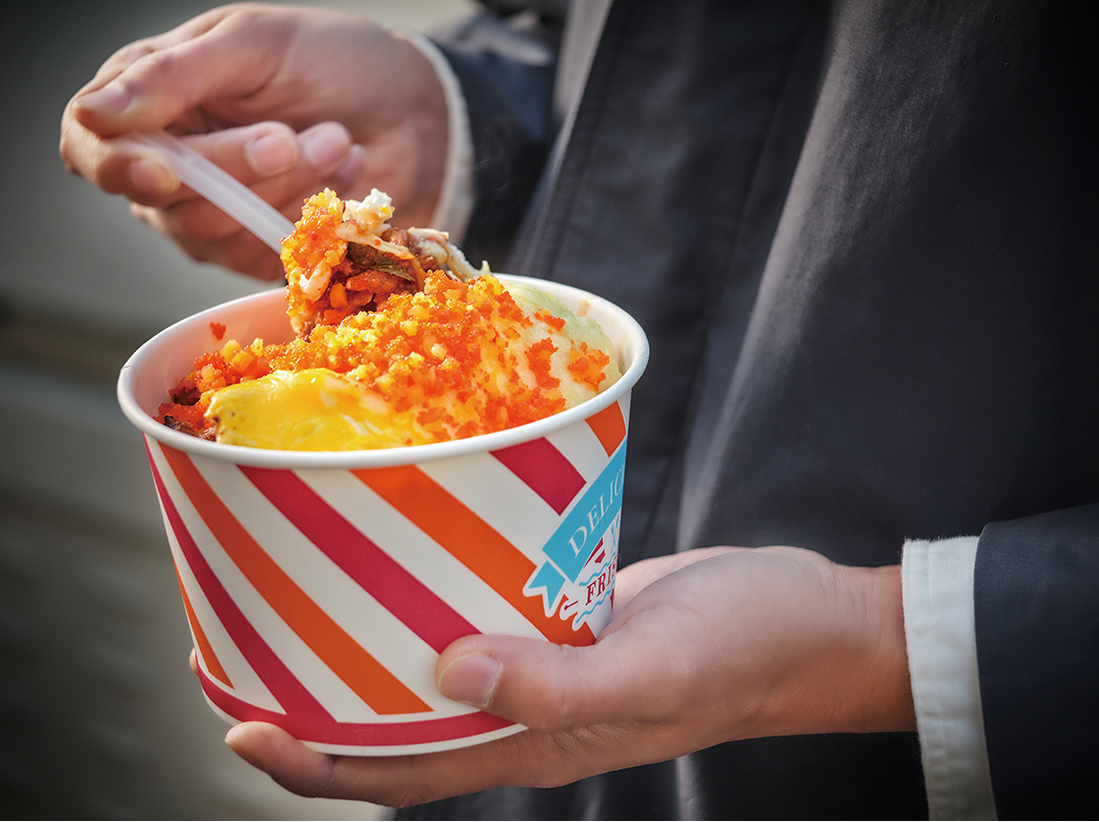
Cup bap is an affordable food that is especially famous in Seoul’s Noryangjin district.
K-food on the Fly
A wide variety awaits lovers of cup bap, though the main ingredients are usually those of fast-food, either in taste or quality. Stir-fried kimchi, rice topped with an egg sunny side up and rice mixed with seasoned meat are often complemented with similarly fatty condiments like mayonnaise and cheese. While vegetables are usually limited to mung bean sprouts and occasionally corn and mushroom, meat options are more eclectic, ranging from Spam, sausage and canned tuna to pork belly, bulgogi (marinated grilled beef), tteokgalbi (grilled short rib patties) and duck meat. All listed meat types are components of prime Korean cuisine.
Though cup bap is often sold for under KRW 3,500, upgraded variants and toppings usually result in double that price.
Cup bap is believed to have made its debut in 1988, the same year McDonald’s made its entrance in Korea. In contrast to Western fast-food being treated as cool imports by its primary consumers — the expanding middle class — cup bap is laden with Hansik essentials and thus earns the title of truly authentic Korean fast-food. For those who do not get out too often, microwaveable versions are available at Korean supermarkets.




